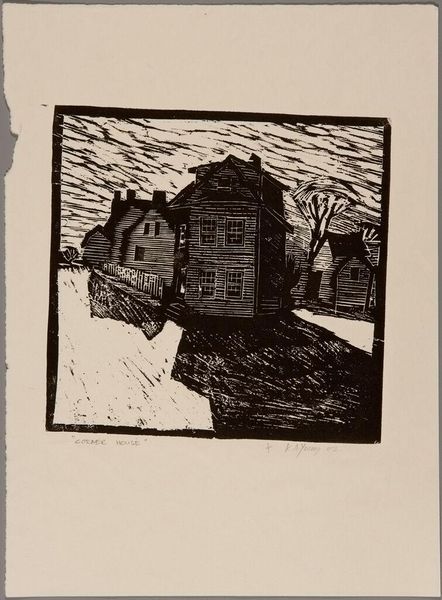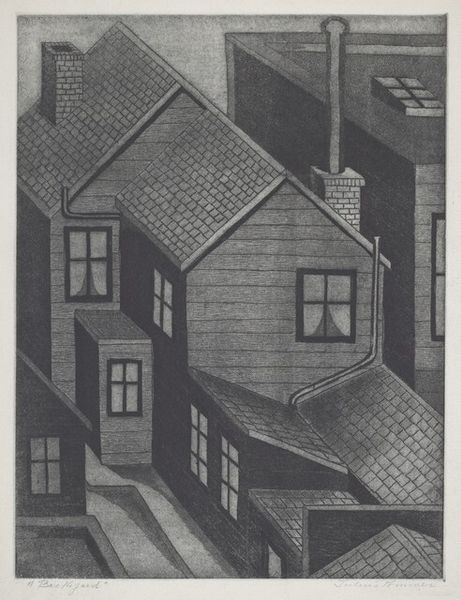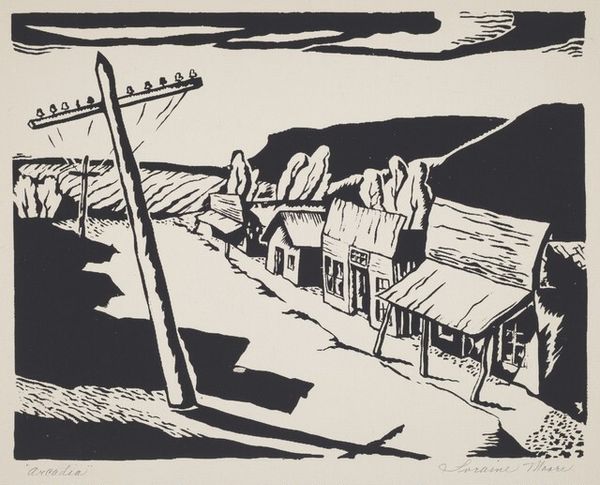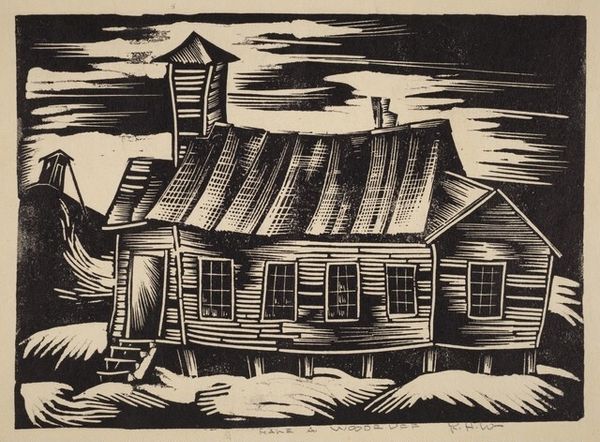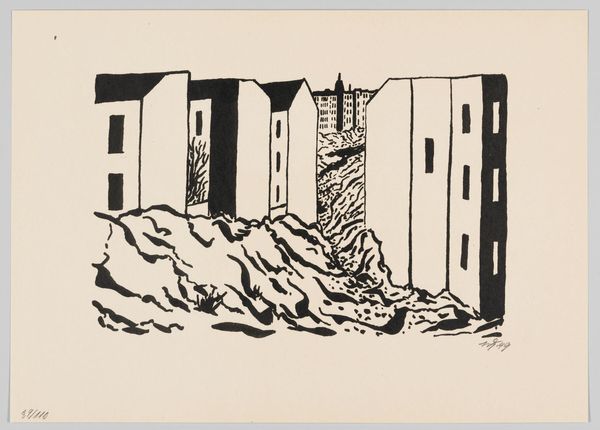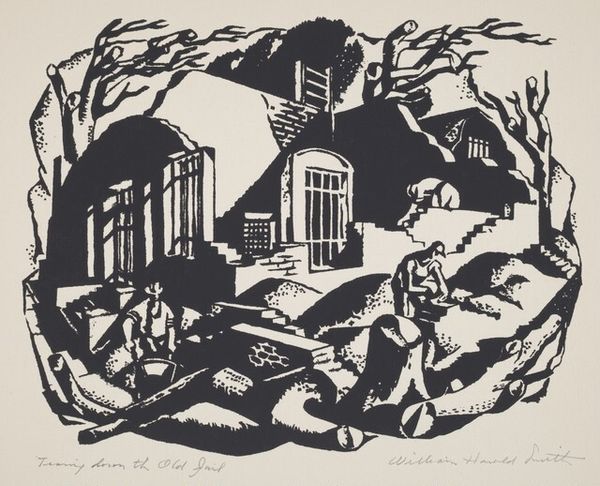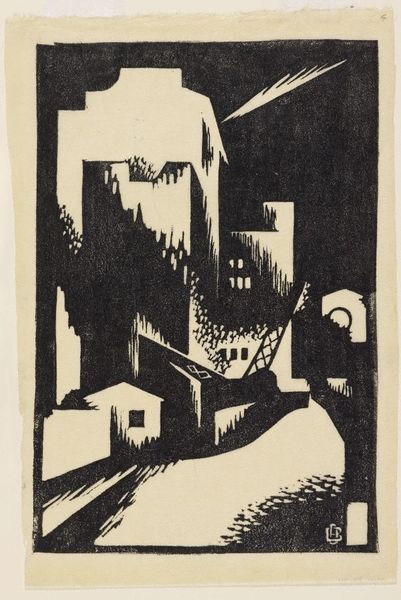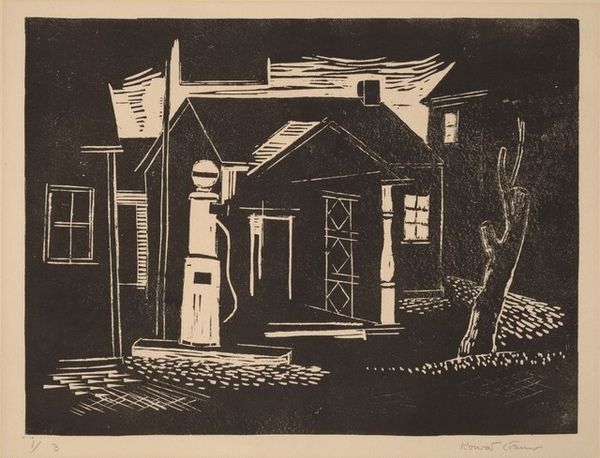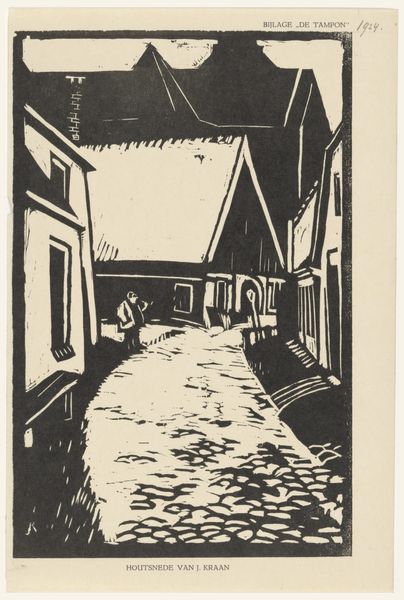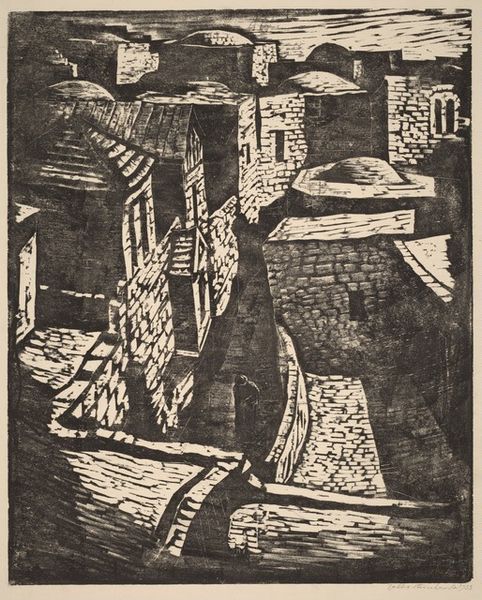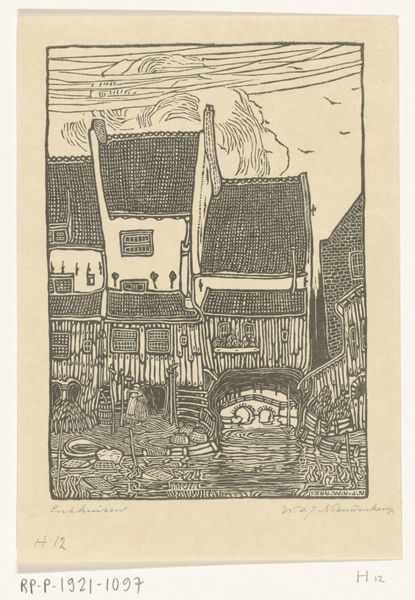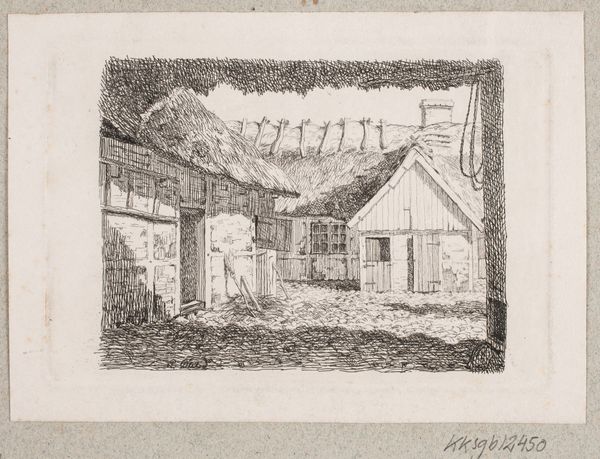
graphic-art, print, woodcut
#
graphic-art
# print
#
geometric
#
woodcut
#
cityscape
#
realism
Dimensions: block: 226 x 168 mm sheet: 279 x 215 mm
Copyright: National Gallery of Art: CC0 1.0
Editor: So, here we have Gerhard Bakker's woodcut print, "Watchman's Shanty," from around 1935 to 1940. I find the stark contrast of black and white so striking, and a little…forbidding. What do you see in this piece? Curator: I see a potent visual statement about labor, industry, and surveillance in the early 20th century. The stark black and white emphasizes the rigid social structures inherent in industrial capitalism. We see the "Watchman's Shanty" dwarfed by the factory; can we think about how that power dynamic mirrors the individual's role within larger economic systems? Editor: It definitely feels like the building and smokestack dominate everything else in the picture. Does the style have a political association as well? Curator: The woodcut medium itself carries connotations. Its history is entwined with the dissemination of social and political critiques. Consider the German Expressionists—how did they use woodcuts to express alienation and social anxieties in a rapidly changing world? Bakker is certainly working within a similar visual language. Editor: So, by using woodcut, Bakker is making a deliberate choice to align himself with those earlier critiques? Curator: Exactly. And by focusing on the watchman's shanty, he directs our attention to those who are literally watching and being watched, who are responsible for maintaining the order of this industrial complex. Who are the watchers, and for whose benefit is the watching? Editor: That’s fascinating. I never considered the act of watching as a form of labor, connected to industrialization. Curator: Precisely. Looking at "Watchman's Shanty" compels us to think critically about the human cost and power dynamics embedded within seemingly neutral cityscapes. It invites us to investigate those hidden structures and unspoken narratives. Editor: I see it so differently now. Thanks for providing that crucial context. Curator: My pleasure. These dialogues are so crucial. They broaden our perspectives on art history and culture!
Comments
No comments
Be the first to comment and join the conversation on the ultimate creative platform.
